#Doug Chiang Artist
Explore tagged Tumblr posts
Text




THE MAJESTY, POWER, & PRESENCE OF "AOTC" CONCEPT ART -- MY ALL-TIME FAVORITE EPISODE.
PIC(S) INFO: Spotlight on concept art from "STAR WARS: Episode II -- Attack of the Clones" (2002) -- Slave I on planet Kamino [Tipoca City], and the Republic Gunship, utilized during the First Battle of Geonosis, artwork by Doug Chiang. Lucasfilm Ltd.
Resolution from largest to smallest: 2048x915, 1950x884, 1080x630, & 858x489.
"May 16, 2000 -- "STAR WARS: Attack of the Clones" -- Doug Chiang’s concept art for the Republic attack gunship. The clone troopers show the scale and hence capacity of the gunships."
-- PAUL DUNCAN (SW/film historian)
Sources: https://twitter.com/kershed/status/1394054811977388034, Facebook, Pinterest, various, etc...
#Attack of the Clones#Republic Gunship#Grand Army of the Republic#SW Prequels#Prequel Trilogy#Prequels#STAR WARS#Doug Chiang Art#Kamino#Tipoca City#Jango Fett#Clone Army#Clone Troopers#Clones#Episode II -- Attack of the Clones#Concept Art#Doug Chiang#Sci-fi Art#Episode II#AOTC#Sci-fi#Sci-fi fantasy#STAR WARS: Episode II#Slave I#Sci-fi Fri#Pre-production Art#Doug Chiang Artist#STAR WARS: Episode II -- Attack of the Clones#Sci-fi/fantasy#Lucasfilm
4 notes
·
View notes
Photo








Concept Artists: Ryan Church, Nick Grindraux, John Park, and Doug Chiang The Art of Star Wars: The Mandalorian by Phil Szostak | Pages 6-7, 14-15, 94-95, 126-127
#star wars#The Mandalorian#The Art of Star Wars#Din Djarin#paz vizsla#grogu#concept art#art#star wars art#The Art of Star Wars: The Mandalorian#star wars concept art#star wars books#ours#star wars book club#swbc#starwarsbookclub
166 notes
·
View notes
Text
The Actor Who Played Jar Jar Binks Is Proud of His ‘Star Wars’ Legacy
Ahmed Best recalls the painful backlash to the “Phantom Menace” character that was considered a racial stereotype at the time but is now embraced by fans.
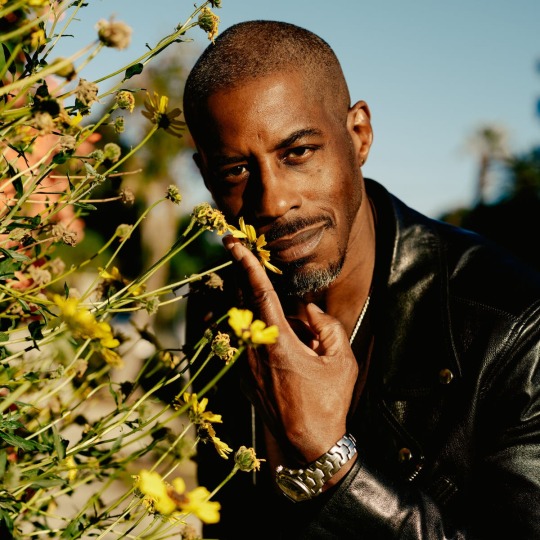
Ahmed Best is a futurist, an educator, a martial artist, a writer-director, and the actor behind Jar Jar Binks, the most hated character in the “Star Wars” universe.
Long-eared Jar Jar is a bipedal amphibianlike creature with an ungainly walk and a winning attitude. The groundbreaking, computer-generated goofball debuted in the first installment of George Lucas’s prequel trilogy, “Star Wars: Episode I — The Phantom Menace,” and instantly set off widespread criticism from both fans and the press.
“It took almost a mortal toll on me. It was too much,” Best recently recalled. “It was the first time in my life where I couldn’t see the future. I didn’t see any hope. Here I was at 26 years old, living my dream, and my dream was over.”
Now 50, Best is the picture of panache who could easily be mistaken for an off-duty rock star. He arrived at our interview, riding a motorcycle and wearing a blue denim jacket, black jeans, and stylish shades.
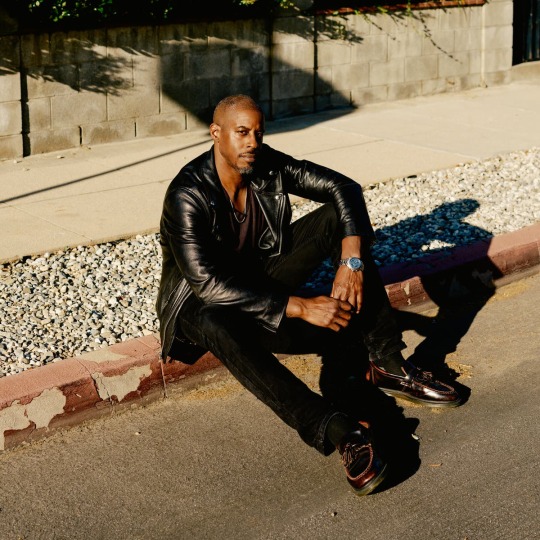
In the presence of Best’s self-assured demeanor, it’s even more shocking to learn that back in 1999, the vitriol fans flung at Jar Jar and, in turn, at him, ravaged his mental health. But he revisited these memories a few weeks before the movie’s return to theaters on Friday to commemorate the 25th anniversary of its release.
Two constellations, “Star Wars” and “Star Trek,” nurtured Best’s curiosity for both science and the arts as a child in the South Bronx. The 1977 “Star Wars” (Episode IV) was the first movie he ever saw in a cinema. Back then, being part of the intergalactic saga seemed unfathomable.
Twenty years later, Best was performing in “Stomp,” the theater show where performers communicate through rhythm and acrobatics, when Robin Gurland, the casting director on “Phantom Menace,” attended a performance in San Francisco. She had spent months conducting an exhaustive search for the actor who could embody Jar Jar’s physicality. That evening, she found him.
“There was just something so electrifying about his performance; it was natural and innovative,” Gurland said by phone. “I couldn’t take my eyes off of Ahmed.”
“What if you were from this other planet, totally different from anything we know? How would you move?” Gurland recalled asking Best during his audition at Skywalker Ranch. “He got it immediately and was able to just create this being out of thin air.”
Doug Chiang, the design director on “Phantom Menace,” remembered Lucas describing Jar Jar as a combination of the silent comedy stars Harold Lloyd, Charlie Chaplin and Buster Keaton. Lucas ruled out a puppet for the alien creature, Chiang said, but still needed Jar Jar to appear grounded in reality to hold up against live actors onscreen.
“Even though this was a synthetic character, created out of ones and zeros, George wanted it to have a lot of expression,” Chiang said via video call. “The actor component was absolutely critical.”
Commonplace now, motion capture, the process of recording a person or object’s movement to serve as the basis for a digital entity, was mostly uncharted territory. Jar Jar became the first main character in a feature film created this way, though initially, the filmmakers didn’t know if it would work.
When Best landed the part as well as the separate assignment to voice the character — providing a playful take he often used with his younger cousins — he thought “it was surreal,” he recalled, adding with a laugh, “I was like, ‘Why me?’ I wanted it, of course, and I’m glad George believed in me, a 23-year-old kid from the streets of New York.”
In Chiang’s view, “Ahmed’s role in this was very understated, and it’s heartbreaking that he didn’t receive the attention and accolade because Jar Jar was a breakthrough character.”
Best spent the better part of two years working with Lucas and Industrial Light & Magic; his acting provided the physical element for the foundational software Lucasfilm created for performance capture. “I’m not Jar Jar. We are Jar Jar,” Best said, crediting the numerous artists involved at different stages of the character’s development.
But during filming, Best had doubts about the role. He credits co-star Ewan McGregor, who played Obi-Wan Kenobi, with helping him embrace Jar Jar’s inherent silliness. Best was on set with the rest of the cast, performing while wearing a suit and headpiece that resembled Jar Jar’s final look
“In one of the first scenes we shot, I was having a hard time with the line ‘Weesa going home!’ because it didn’t feel right to me,” Best recalled. “And then Ewan said, ‘But how does it feel to Jar Jar?’ That’s when I thought, ‘I’m going to take my ego out of this.’”
When he saw the final rendering of Jar Jar onscreen, he was taken aback. “I was up there, and I wasn’t up there at the exact same time,” Best said. “Jar Jar moved like me, and that was just a very odd feeling.”
Unfortunately, Jar Jar was a pioneering character in more ways than one. Critics said the character was a collection of racial stereotypes, “a Rastafarian Stepin Fetchit,” as The Wall Street Journal described him. One complaint was Jar Jar’s accent, which some perceived as derived from Jamaican patois.
“Everybody talks about Jar Jar’s accent,” said Best, who is of West Indian descent. “I read exactly what George wrote. It wasn’t me. It wasn’t an accent.”
“Back in the day, Chewbacca was seen as the Black character,” he continued. “And then Yoda was ridiculed for being an Asian stereotype. Then, the Neimoidians were ridiculed for being an Asian stereotype. ‘Star Wars’ has had a history of being a lightning rod. That’s because it’s so successful.”
No matter the context, the onslaught of negative reactions in the nascent online forums of the late ’90s, as well as in traditional media, drove him to consider suicide, he said.
Looking back now, Best said Jar Jar “was probably also the first cyber-bullied pop culture character ever.” In his view there were other factors that contributed to the barrage, including racism among fans, something another “Star Wars” performer, Kelly Marie Tran, called out in 2018 when she endured online harassment. (He said he related to “Kelly Marie for sure. She’s a phenomenal actor” and the way she was treated was “completely unwarranted.”)
“There are a lot of people who want to see Luke Skywalker, Han Solo and Darth Vader for the rest of their lives, and they don’t realize that ‘Star Wars’ is changing,” Best said. He noted that the “Star Wars” franchise had yet to have a movie centered on a Black protagonist and added with a laugh, “I’m available.”
But worse than the ceaseless public scrutiny was learning that his role had been dramatically reduced for the two sequels, “Attack of the Clones” and “Revenge of the Sith.”
“As an artist, you want the respect from your peers, and I felt as if I was being scaled back because I didn’t do a good job,” he said. “It really hurt. Everybody was running away from me, including the people that I gave two years of my life to.”
Finding acting work post-“Star Wars” proved nearly impossible. The first hurdle was proving he had been in the movies: “When I’d tell people what I did as Jar Jar, they would be like, ‘That’s just animation. I don’t see your face, so how do I know it was you?’” Best recalled. “And I’d say, ‘No, it was me. I’m an actor; it’s called motion capture.”
He admitted that even all these years later he remained hesitant to talk with journalists about that time. “It’s such a cultural phenomenon, and there are few Black voices in ‘Star Wars,’ so I feel that I’m partially obliged to keep my voice out there,” he said.
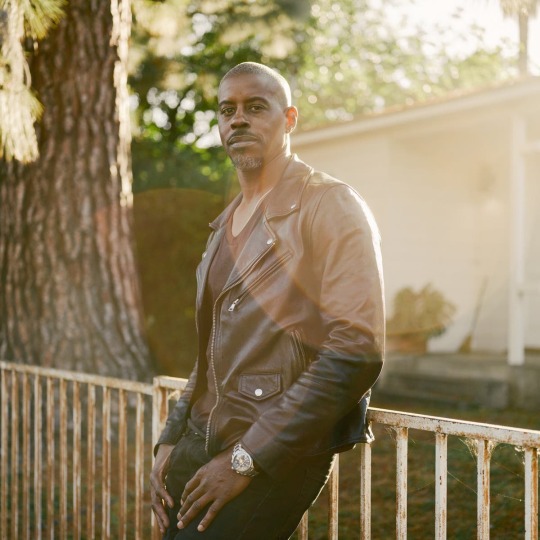
Since those dark days, Best has diversified his ambitions. He’s an adjunct lecturer at the University of Southern California’s School of Dramatic Arts, where he teaches filmmaking for actors. At Stanford University’s d.school, he has taught a class revolving around Afrofuturism, a subject that informs his belief that an optimistic future is possible through the combination of narrative art and technology.
“Jar Jar represents the possibility that whatever you got in your head, creatively, we can invent a future where this thing exists,” he said. “Just because no one has done it before, doesn’t mean it can’t be done.”
Throughout the years, Jar Jar hasn’t entirely left Best’s life. The actor has voiced the character in video games and in animated shows like “Star Wars: The Clone Wars.”
“It’s big, and it tends to overtake your life,” Best said. “The thoughts I’ve had were, ‘Who am I outside of this?’ Because as an artist, you don’t want to be locked into one thing.”
More recently, he’s rejoined the “Star Wars” universe in his own body, as the warrior teacher Kelleran Beq on the children’s show “Jedi Temple Challenge” and in an episode of “The Mandalorian.”
“This is going to sound really corny, please forgive me, but it felt like coming home,” Best said.
Despite the baggage, Best never stopped loving Jar Jar. When he meets fans — on the rare occasions that he agrees to appear at conventions — Best has noticed it’s usually young children, people with disabilities and those who have been ostracized who identify most with Jar Jar. “He’s misunderstood, but Jar Jar’s heart is so pure,” he said.
At the time of the backlash, Lucas assured Best that Jar Jar’s target audience — who were kids and for whom the character would become a fond childhood memory — would eventually come to his defense. “He was right,” Best said. “It’s a different story now.”
Witness the reception for Best in 2019 at “Star Wars” Celebration, an event dedicated to the franchise, when fans welcomed him with thunderous applause. “It really warmed my heart to see him get that,” Chiang recalled.
Heart comes up a lot when Best’s name is mentioned.
Dave Filoni, the chief creative officer of Lucasfilm and a writer on “The Mandalorian,” described him as “a unique talent, and no one can replicate what he brings through his performance as Jar Jar. There is comedy, but also a lot of heart.”
And Best takes solace in the role he’s played behind the scenes as well. He noted that the software developed through his work as Jar Jar became central to the creation of future C.G.I. characters.
“I’m in there,” Best said. “You can’t have Gollum without Jar Jar. You can’t have the Na’vi in ‘Avatar’ without Jar Jar. You can’t have Thanos or the Hulk without Jar Jar. I was the signal for the rest of this art form, and I’m proud of Jar Jar for that, and I’m proud to be a part of that. I’m in there!”
#glad he's living his best life#ahmed best#jar jar binks#kelleran beq#star wars: the phantom menace#star wars#the new york times
12 notes
·
View notes
Note
Top 10 de tes artistes préférés, toutes disciplines artistiques confondues ?
Ce soir la réponse, ce sera : Hans Zimmer Denis Villeneuve Ralph McQuarrie James S. A. Corey (aka Ty Franck & Daniel Abraham) Gavin Harrison Jodie Foster Doug Chiang Araki Nobuyoshi Hideo Kojima Mads Mikkelsen
4 notes
·
View notes
Text
Doug Chiang's a great concept artist, but holy hell these do not fit the aesthetic of the Alien franchise at all.




Concept art by Doug Chiang for ILM’s bid to create the effects for Alien 3 (1992)
319 notes
·
View notes
Text
Lucasfilm have revealed the cast and crew they're putting forward for Emmy consideration, and it's a long list as the creatives behind the third season of The Mandalorian go for gold. Every episode of the third season gets some kind of nod, including submissions for every big-name member of the Mandalorian family; Pedro Pascal, Katee Sackhoff, Dave Filoni, Jon Favreau, Rick Famuyiwa and more. This is certainly a comprehensive list, so plenty for the powers that be to think about. OUTSTANDING DRAMA SERIES Jon Favreau, Executive Producer Dave Filoni, Executive Producer Kathleen Kennedy, Executive Producer Colin Wilson, Executive Producer Rick Famuyiwa, Executive Producer Karen Gilchrist, Co-Executive Producer John Bartnicki, Producer Carrie Beck, Co-Executive Producer DIRECTING FOR A DRAMA SERIES Rick Famuyiwa (307) Rachel Morrison (302) Lee Isaac Chung (303) Carl Weathers (304) Peter Ramsey (305) Bryce Dallas Howard (306) WRITING FOR A DRAMA SERIES Jon Favreau (307) Dave Filoni (307) Noah Kloor (303) LEAD ACTOR IN A DRAMA SERIES Pedro Pascal LEAD ACTRESS IN A DRAMA SERIES Katee Sackhoff SUPPORTING ACTOR IN A DRAMA SERIES Carl Weathers SUPPORTING ACTRESS IN A DRAMA SERIES Emily Swallow GUEST ACTOR IN A DRAMA SERIES Omid Abtahi (303) Ahmed Best (304) Paul Sun-Hyung Lee (305) Jack Black (306) Christopher Lloyd (306) Giancarlo Esposito (307) GUEST ACTRESS IN A DRAMA SERIES Amy Sedaris (302) Katy O’Brian (303) Lizzo (306) CHARACTER VOICEOVER PERFORMANCE Shirley Henderson – Anzellans Crew (301) CASTING FOR A DRAMA SERIES Sarah Halley Finn, CSA CINEMATOGRAPHY FOR A DRAMA SERIES Dean Cundey, ASC (304) David Klein, ASC (307) Paul Hughen, ASC (306) FANTASY/SCI-FI COSTUMES Shawna Trpcic, Costume Designer Elissa Alcala, Assistant Costume Designer Julie Robar, Costume Supervisor Julie Yang Silver, Costume Supervisor PERIOD AND/OR CHARACTER HAIRSTYLING Maria Sandoval, Hair Designer (303) Ashleigh Childers, Key Hair Stylist Sallie Ciganovich, Hair Stylist PERIOD AND/OR CHARACTER MAKEUP Cristina Waltz, Department Head Makeup Artist (306) Ana Gabriela Quinonez Urrego, Key Makeup Artist Alex Perrone, Makeup Artist Crystal Gomez, Makeup Artist MUSIC COMPOSITION IN A DRAMA SERIES (ORIGINAL DRAMATIC SCORE) Joseph Shirley (308) and Ludwig Göransson ORIGINAL MAIN TITLE THEME MUSIC Ludwig Göransson SINGLE-CAMERA PICTURE EDITING FOR A DRAMA SERIES Jeff Seibenick (308) Dylan Firshein (306) Rachel Goodlett Katz, ACE (307) J. Erik Jessen (306) PRODUCTION DESIGN FOR A NARRATIVE PERIOD OR FANTASY PROGRAM (ONE HOUR OR MORE) Andrew L. Jones, Production Designer (307) Doug Chiang, Production Designer Oana Bogdan Miller, Supervising Art Director Amanda Serino, Set Decorator SOUND EDITING FOR A DRAMA SERIES Matthew Wood, Supervising Sound Editor (308) Trey Turner, Supervising Sound Editor David W. Collins, Sound Editor (Sound Design) Brad Semenoff, Sound Editor (Dialog) Luis Galdames, Sound Editor (FX) Joel Raabe, Sound Editor (Foley) Stephanie McNally, Music Editor Nicholas Fitzgerald, Music Editor Shelley Roden, Foley Artist' SOUND MIXING FOR A DRAMA SERIES Scott R. Lewis, Re-recording Mixer (308) Tony Villaflor, Re-recording Mixer Shawn Holden CAS, Production Mixer Chris Fogel, Scoring Sound Mixer SPECIAL VISUAL EFFECTS IN A SEASON OR A MOVIE Grady Cofer, Visual Effects Supervisor Abbigail Keller, Visual Effects Producer Paul Kavanagh, Animation Supervisor Cameron Neilson, Assoc. Visual Effects Supervisor Scott Fisher, Special Effects Supervisor Hal Hickel, Animation Supervisor J. Alan Scott, Legacy Effects Supervisor Victor Schutz IV, ILM Visual Effects Supervisor Bobo Skipper, Visual Effects Supervisor STUNT COORDINATION JJ Dashnaw, Stunt Coordinator STUNT PERFORMANCE Lateef Crowder, Paul Darnell, JJ Dashnaw, Ryan Ryusaki (308) Bedst of luck to all concerned, and we'll be sure to bring all the nominations once they are chosen and announced.
1 note
·
View note
Photo

Doug Chiang, at work on the Razor Crest concept art in the Lucasfilm art department. Still from Inside ILM: Creating the Razor Crest, YouTube, September 24, 2020.
https://youtu.be/8YuaIwVbEZo
__________________________________________________ Our shop: https://bookshop.org/shop/manyworldspress
#star wars#the mandalorian#Razor Crest#doug chiang#lucasfilm#industrial light and magic#spaceships#workspace#artist studio
3 notes
·
View notes
Text
THIS IS WHAT I'VE BEEN SAYING
I can't speak to the filmmaking side, I don't know what to do with a camera.
But I know production design.
The costume design in this show is god-awful. Whatever shin and baylan are wearing it does not look like clothing. Sabine Wren, a proud Mandalorian, spends most of the show not even wearing her armour. She HAS it, she's just not wearing it... because reasons. The hair and makeup leave so... SO MUCH to be desired. Just... Thrawn. The volume is nowhere NEAR as convincing as Filoni thinks it is. That hyperdrive ring bridge set looks like it was made by high schoolers (and I did better set pieces in high school). Nothing is properly weathered, even CHOPPER, C1-10P, a rolling TRASH CAN, is clean and shiny!
The end credits font isn't even even Franklin Gothic
And... here's the thing.
Star Wars is not a very interesting story. It's a very simple, perfectly formulaic 3-act film largely ripped off from Kurosawa.
What made Star Wars iconic was its PRODUCTION. The artists, modellers, and designers of Star Wars are almost as famous as its actors. Ralph McQuarrie, Colin Cantwell, John Dykestra, Phil Tippett, Ben Burtt, and SO MANY MORE.
Industrial Light and Magic, the first dedicated special effects company in Hollywood, was FOUNDED because of Star Wars.
In the prequels, Star Wars was STILL FAR more practical then people give it credit for being. TWO Mythbusters worked on Star Wars. Adam Savage hand-painted thousands of Q-tips to be a cheering crowd in the boonta eve classic grandstands. And even WITH the cgi it was making leaps and bounds technologically. Jar Jar Binks wasthe FIRST EVER fully CGI character in a movie.
For Rogue One, the Doug Chiang's design team team created 718 concept sketches before finally settling on the design for the U-Wing
Andor built a GIGANTIC set for Ferrix, so big it could HIDE an ENTIRE ORCHESTRA. Oh yeah, they played the soundtrack LIVE. WHILE FILMING.
Production quality MATTERS in star wars. It is a DEFINING quality.
Star Wars is ALWAYS supposed to be at the bleeding edge of film production. And when it isn't done by passionate artists given the time and budget they need to do their BEST. IT SHOWS.
Some nice wide shots from the Baylan fight not withstanding, I continue wishing that the Ahsoka show just... looked better. Like, the effects are mostly OK, but that forest sequence could've had some lovely rich reds set against deep, ominous blacks and yet, it's pretty much concrete.
Also, wild that the thing they took from Kurosawa wasn't anything about the ways he shot movement, but instead "sometimes the characters stand really still." And then used it five times instead of the once or twice that Kurosawa would employ it per film (per film, mind you, as opposed to 30-50min episode of tv).
Besides just some personal preference (really static shooting tends to test me, as in the PT), I think some more kinetic shooting would help to sell these fights and these characters. We're dealing with a nimble Mandalorian who used to dance merrily around Stormtroopers, and a Jedi who once fought on top of gunships as they raced through the stratosphere. As it is, their choreography feels kind of stop-start as the blocking biases towards minimal and slow movement, and the editing remains pretty languid.
On top of that, I feel like Dave Filoni has unlocked some kind of Skyrim skill tree perk where he can just mimic something he did in another show and get a standing ovation. I don't know if it's a deliberate crutch, but it means we just keep being hit with very familiar images, without any real commentary beyond maybe a bit of an inversion.
It could all just be doing a heck of a lot more visually, and it continually baffles me that someone who worked on such well-regarded animated shows is making live-action work which is so... inanimate. And all the more so when people are yelling "my man COOKED" while I'm going "he neglected the spice cupboard".
30 notes
·
View notes
Photo

Gungan Sacred Place (concept art)
#star wars#star wars concept art#naboo culture#gungans#in universe sacred places#artist: Doug Chiang
81 notes
·
View notes
Photo



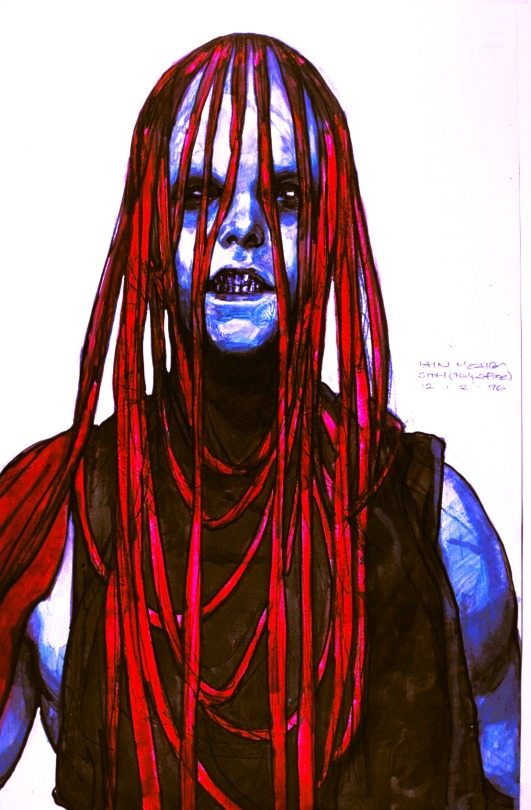

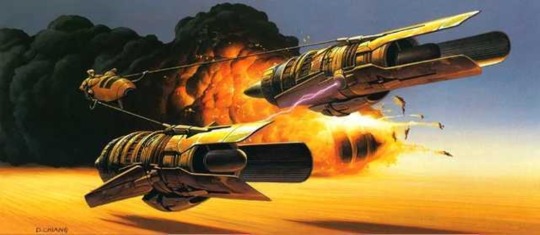
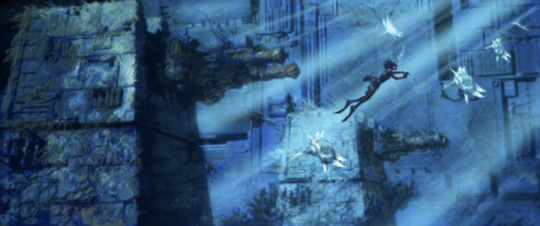
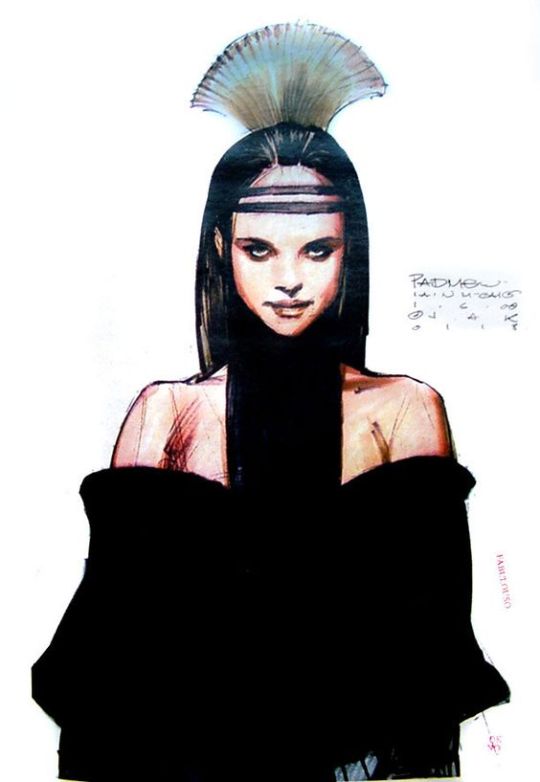
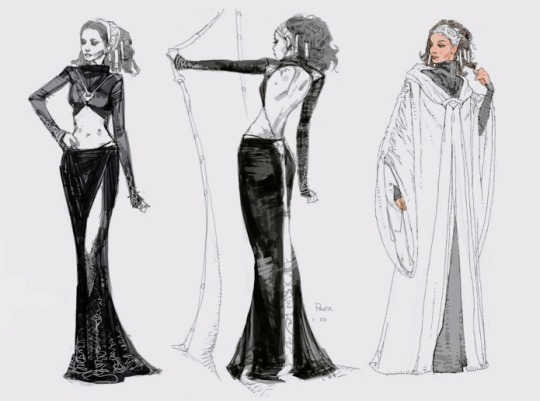
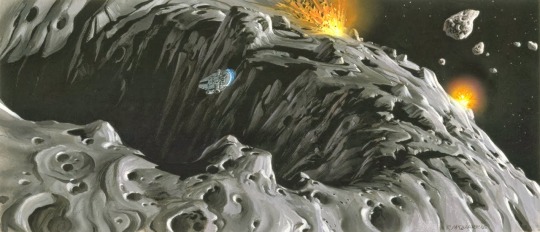




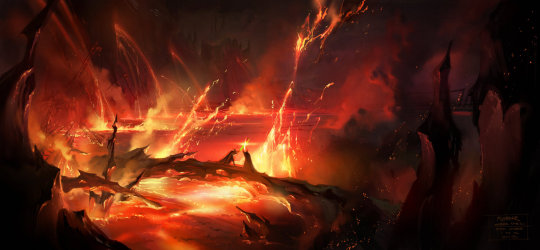
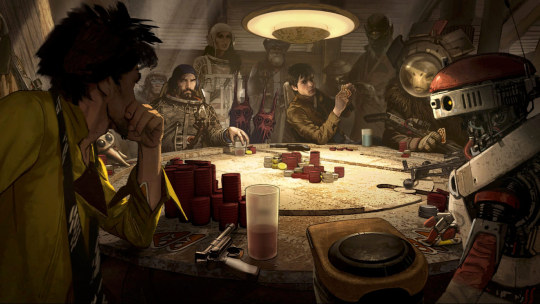

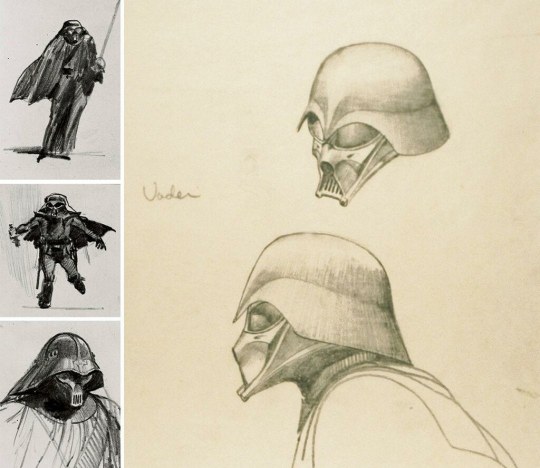
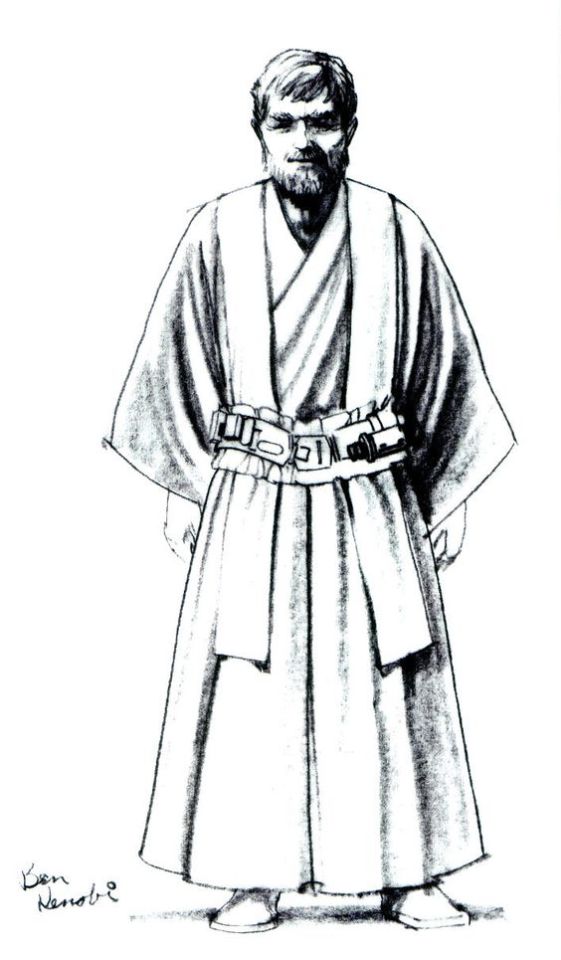


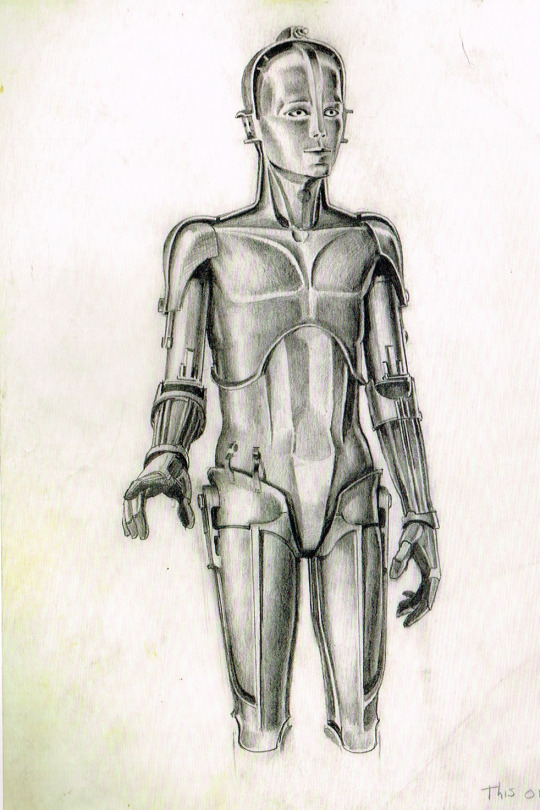

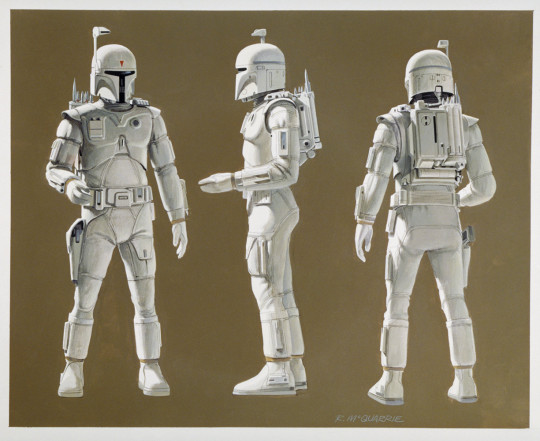
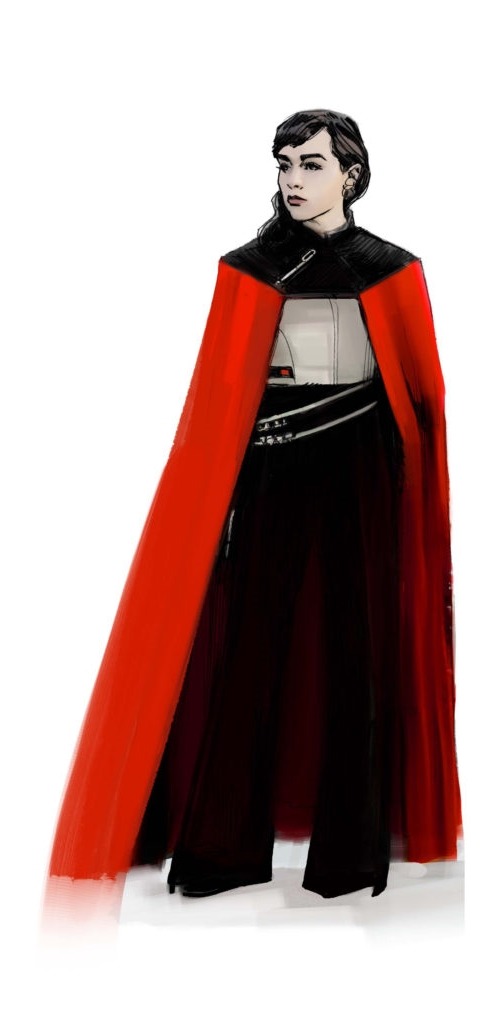

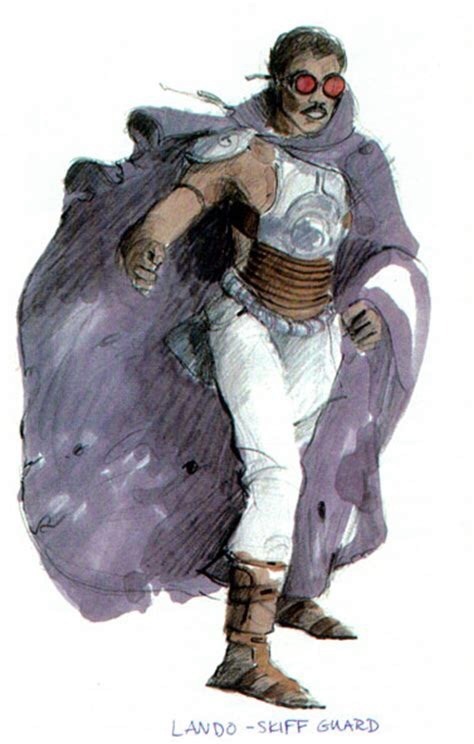

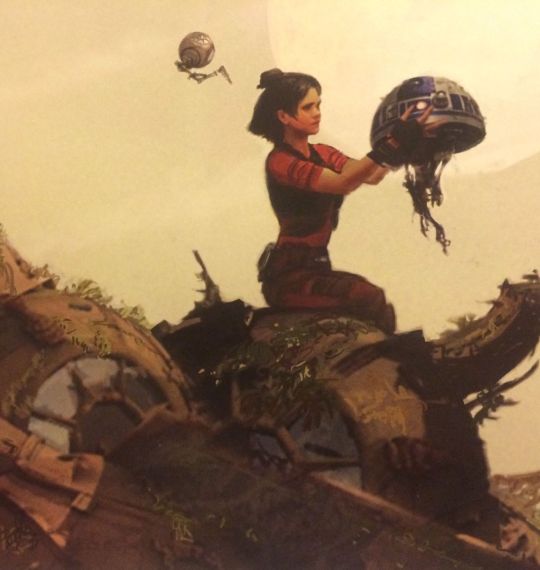
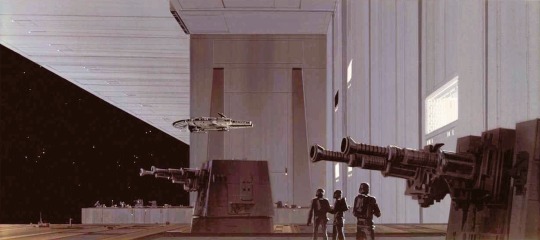
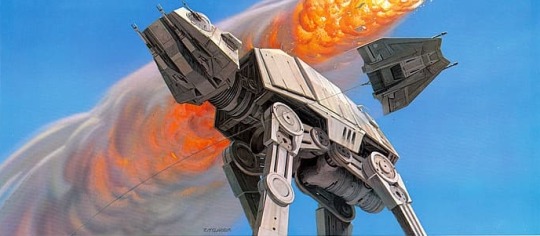
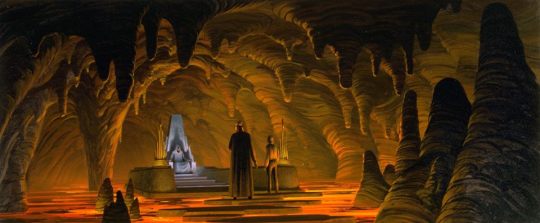
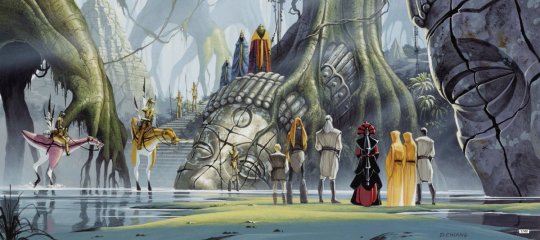
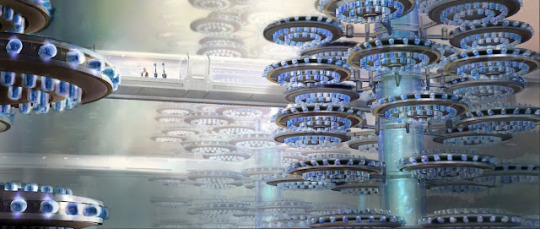


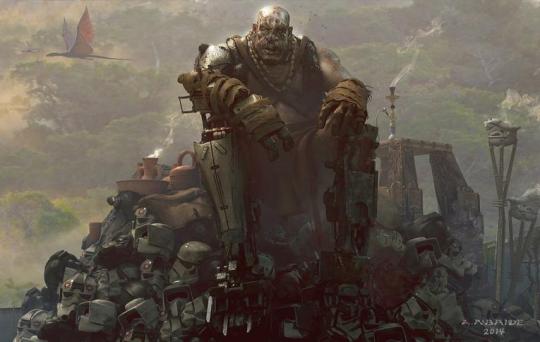

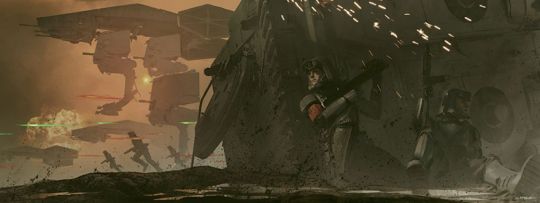




G r e a t S T A R W A R S C o n c e p t A r t
various artists, including Ralph McQuarrie, Joe Johnston, Ian McCaig, Doug Chiang, Ryan Church
591 notes
·
View notes
Text
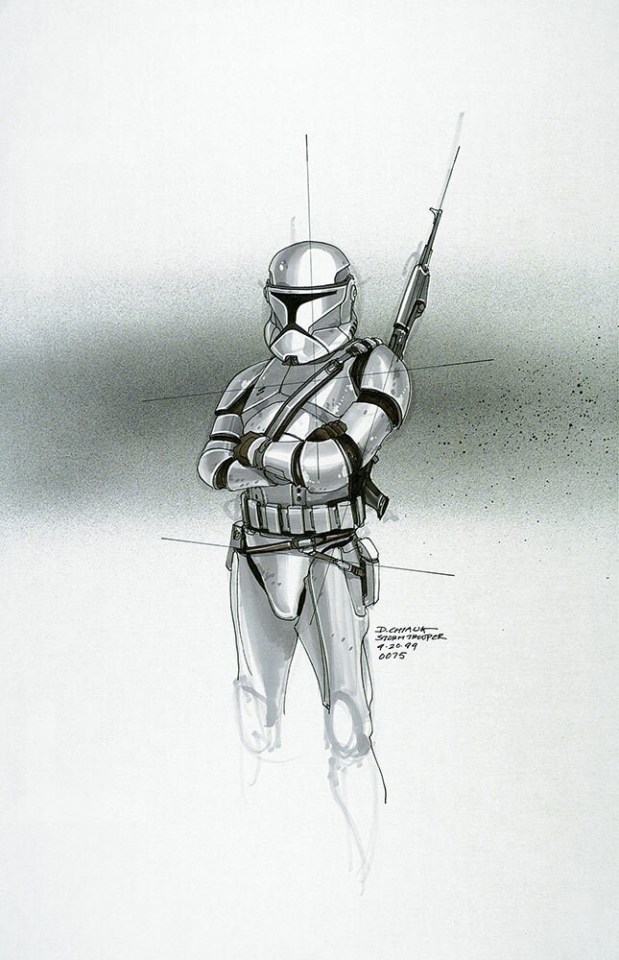
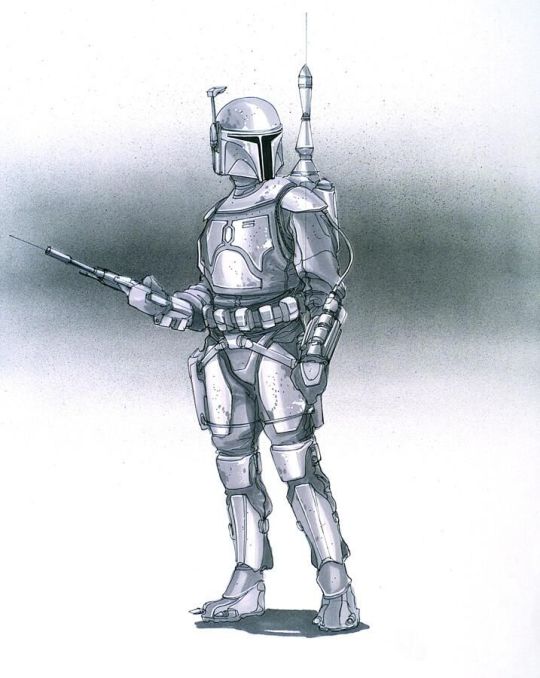
"[GEORGE] WANTED TO CREATE THE IDEA THAT JANGO FETT'S ARMOR BECAME THE EVOLUTION FOR THE STORMTROOPERS."
PIC(S) INFO: Spotlight on concept art for phase I clone trooper armor and the armors genesis, the bounty hunter Jango Fett, artwork by design director Doug Chiang for "STAR WARS: Attack of the Clones," c. 1999. Lucasfilm Ltd.
AOTC/TRIVIA FACT: You can draw a line from Boba Fett’s helmet to the clone troopers.
OVERVIEW: "After completing work on the "STAR WARS: The Phantom Menace," art director Doug Chiang started "Clones" just a week after the prior movie’s release. It was a continuation of an exercise in world-building. “When we started working on the prequels,” he said, “the designs and the direction took me for a complete loop, because George wanted to try something new and establish a whole aesthetic guideline for the whole "STAR WARS" universe.”
This is evident in the clone trooper armor, which made its first appearance in the film. “This is really the fun of working with George,” Chiang explained. “He wanted to create the idea that Jango Fett’s armor became the evolution for the stormtroopers. So I literally took Jango Fett and his armor and basically kept the original design that Joe Johnston and Ralph McQuarrie did. Then we started to blend it towards the classic stormtrooper helmet that we saw in the original trilogy.” The initial “phase one” trooper in "Clones" shares a T-visor design with Jango and Boba Fett, whereas those in "Star Wars: Revenge of the Sith" more closely resemble the stormtroopers."
-- STAR WARS, "SWCA 2022: 8 Things We Learned from the "STAR WARS: Attack of the Clones" 20th Anniversary Panel," by Lucas Seastrom, May 28, 2022
Sources: www.starwars.com/news/swca-2022-attack-of-the-clones-20-panel & Pinterest.
#STAR WARS: EpisodeII -- Attack of the Clones#STAR WARS: Episode II#Pre-production Art#Concept Art#Episode II: Attack of the Clones#Clone Troopers#Jango Fett#Sci-fi Fantasy#Clone Army#STAR WARS#Prequel Trilogy#Sci-fi Fri#Sci-fi Art#AOTC#Doug Chiang Artist#Attack of the Clones#Doug Chiang#Sci-fi#Grand Army of the Republic#Doug Chiang Art#Bounty Hunter#Episode II#2002#Clones
3 notes
·
View notes
Text
How the “Obi-Wan failed Anakin” subplot was retconned by George Lucas.
So an argument I see a lot in some “Obi-Wan failed Anakin” posts is saying “Ben failed Luke’s father, he said it himself in ROTJ”.
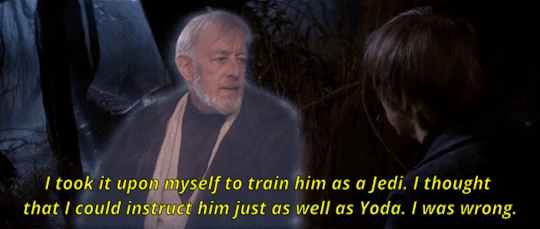
Now, while I could simply quote LucasFilm creative executive Pablo Hidalgo, who tweeted in 2017...
“If a fictional character thinks something, it doesn’t necessarily mean they’re right.”
... and leave it at that, I think it’s interesting to see just how far the “Obi-Wan failed Anakin” subplot went with Lucas, before he retconned it into something else entirely.
The original subplot:
In a story conference for Episode VI that was first transcribed in 1981 and later collected in The Making of Return of the Jedi (2013), Lucas discussed this with Lawrence Kasdan and Richard Marquand:

“Ben [takes] the blame for Vader. “I should have given him more training. I should have sent him to Yoda, but I thought I could do it myself. It was my own pride in thinking that I could be as good a teacher as Yoda. I wish that I could stop the pestilence that I’ve unleashed on the galaxy.” His burden is that he feels responsible for everything that Vader has done.”
And in an interview done with in 1996, collected in the book The Star Wars Archives: 1999-2005 (which I highly recommend getting, so insightful) Lucas discussed how he planned on portraying Obi-Wan in one of the earliest screenplay drafts for The Phantom Menace:

“The story has Obi-Wan as a young Jedi in his mid-twenties. He’s ambitious and takes on the mentorship of this kid who starts out about eight or nine years old. […] Even though he’s too old to start the training of a Jedi, Obi-Wan feels the Force is so strong with him that he has to train him as a Jedi. […] Obi-Wan begins as this strong Jedi character but when you see all six movies, you’ll see that what Ben is doing with Luke is very close to the same mistake he made with Anakin.”
So Obi-Wan was the only Jedi we saw for the first half of the script.
And, by the way... he wasn’t always in his mid-twenties. As concept artist Ian McCaig puts it:
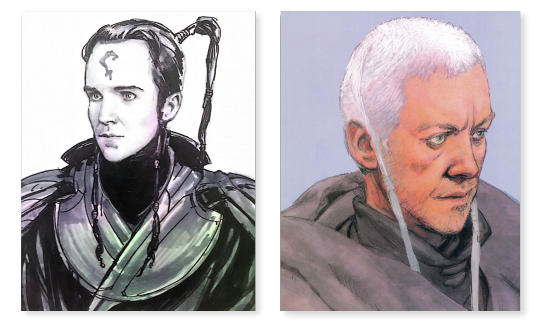
“Obi-Wan’s age changed all over the place — at one point he was substantially older, like a youngish 50. For a long time we had a character who was samurai-like, with a ponytail and long sideburns.”
So hey, bottom line (and as illustrated below by artist Doug Chiang):
Obi-Wan, alone, comes to negotiate with the Trade Federation. Just like he and Qui-Gon did in the final cut, he fights his way off the ship, he rescues the Queen...

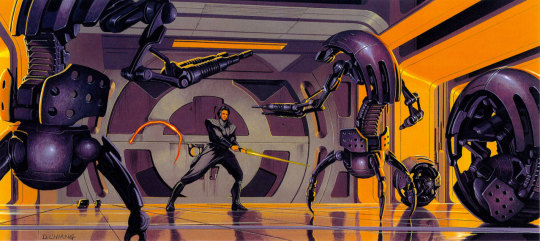
... and he finds Anakin.
He is impressed by his skills with the Force. He decides to bring him to the Jedi and he insists that Anakin should be trained.
So far, this is consistent with what is mentioned in Return of the Jedi, and it’s clear that, at this point in time, the narrative Lucas was originally going for was the notion that: “In his ambition and arrogance, Obi-Wan trained Anakin but overestimated his own abilities as a teacher, which ultimately resulted in the creation of Darth Vader.”
Bringing in Qui-Gon:
But months later, when tackling a newer draft of the script, Lucas decided to split Obi-Wan’s impact on the story into two… and that’s when he made the decision to give a bigger role to another Jedi who originally appeared much later in the film.
Thus was created a Jedi mentor for Obi-Wan called Qui-Gon Jinn.

“I wasn’t able to develop Obi-Wan’s character fast enough. When I got through the rough draft I realized that I had a second Jedi that comes in about halfway through the script who is an interesting character and the more I thought about it the more I thought of things I could do with these two Jedi together because one alone didn’t have much to react to.”
And when I looked further into it... this isn’t actually new information!
This was also mentioned in the old Databank on earlier versions of StarWars.com, and in The Art of Star Wars: The Phantom Menace, in which they also explain that they briefly considered making Qui-Gon be Obi-Wan’s Padwan, and having Ewan McGregor playing “Padawan Qui-Gon”, before they finally settled on having Obi-Wan be the apprentice instead.
Other fun fact: there’s a scanned copy of the 1997 shooting script online (you can download it here)... and in it, you’ll notice that in the scene where they have dinner at Shmi’s house, some of the character description still reads “OBI-WAN” instead of “QUI-GON”, because they forgot to replace some of them :D
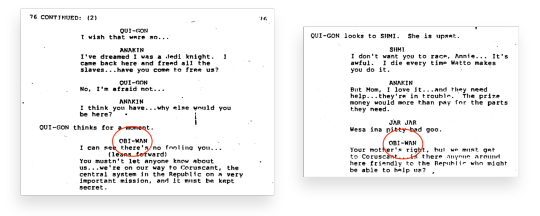
But as a result of bringing in Qui-Gon and shifting around the character dynamics, the decision of ambitiously taking Anakin in no longer falls on Obi-Wan… but on Qui-Gon.
How the addition of Qui-Gon changed the subplot:
If we look at things objectively, Qui-Gon saw a boy with an enormous M-count and massive potential in the Force, and figured “this kid must be the Chosen One”. And part of Qui-Gon’s character is that he feels, instead of thinking… he uses his instincts. And his instincts are never wrong (or so he thinks).
But while Qui-Gon’s instincts are correct (Anakin is indeed the Chosen One, no question there), he’s going about it the wrong way.

“So here we’re having Qui-Gon wanting to skip the early training and jump right to taking him on as his Padawan learner, which is controversial, and ultimately, the source of much of the problems that develop later on.”
- The Phantom Menace, Director’s Commentary, 1999
“I think it is obvious that [Qui-Gon] was wrong in Episode I and made a dangerous decision, but ultimately this decision may be correct.”
- Cut Magazine, 1999
He’s insisting this kid become a Padawan at once, without having him spend some time with the younglings to adjust… and everyone else is saying that that’s crazy. Cuz it is. But he is unable to consider the fact that he’s mistaken.
His instincts are never wrong, right? So he just keeps pushing for it.
Then he gets killed and with his dying breath, he forces the task of training Anakin onto Obi-Wan, who hasn’t even gone through the Trials, yet.
So right here, the original subplot has been retconned:
Obi-Wan no longer takes Anakin on because he’s an ambitious big-shot Jedi who arrogantly goes ‘pfft, if Yoda can do it, I can too’.
Instead, at the start, he takes Anakin on reluctantly... not because Anakin’s a problem, but because Obi-Wan feels that he, as a Master, won’t be up to the task.

Still, he steps up and takes on the responsibility. And while the task itself is ambitious, Obi-Wan doesn’t do it for the “glory of training the Chosen One”. He’s just keeping a promise, by being there for a 9-year-old kid who was taken away from his mother and whose paternal figure just died.
He decides to train the boy, honoring Qui-Gon’s memory.
The new subplot:
Now, while Obi-Wan’s fear that he may be inexperienced may be accurate in some areas... it isn’t in others. Namely, Obi-Wan’s ability to deal with a personality like Anakin’s.
Anakin had many character traits in common with Qui-Gon, including the following flaws:
They’re both headstrong, unruly mavericks.
Neither is very forthcoming about their own emotions.
Some people are outgoing, and need someone who will listen. Others are not, and need someone who will ask them and get them to talk. Anakin and Qui-Gon are examples of the latter. They get lost in their own thoughts and don’t open up unless they are pressed.
But this means that Obi-Wan already had experience dealing with this sort of personality before taking on Anakin. So he knows exactly what to do.
Whether Anakin is stressed...


... or is just bottling up his feelings...


... most of the time, Obi-Wan will get Anakin to open up.
(credit to @ashleyeckstein for that last GIF)
As Lucas said:
“One of the primary issues between this relationship between Obi-Wan and Qui-Gon is that this is establishing Obi-Wan as the kind of straight arrow, the center of the movie, and Qui-Gon as the rebel, as the one who’s constantly sort of pushing the envelope. Which will switch itself in the next movie when, rather than having his master be the rebel, he has his Padawan learner become the rebel. I’m using Obi-Wan as sort of this centering device through all these movies, even as we get in with Luke and everybody else later on.” - The Phantom Menace, Director’s Commentary, 1999
Obi-Wan is a centering device.
He’s not so dogmatic that he will do anything the Jedi Council says, though he will try to stay within the lines. That said, you can change his mind, if your point is valid, unlike Qui-Gon who will hunker down on his own stance.
Obi-Wan is the middle ground (despite what the memes say 😃).
He’s the stable Yin to chaotic Yangs like Qui-Gon or Anakin.
So it turns out that pairing Anakin with a master like Obi-Wan... is actually a great fit! They complement each other, there’s a symbiosis.
And so he trains and practically raises Anakin as a paternal/fraternal figure, they become friends. Then, when Anakin is knighted, they become equals.
Anakin becomes an almost-perfect Jedi Knight, despite the terrible odds he faced. He is brave, kind, generous, powerful, loyal, he’s the best fighter pilot in the galaxy. He is more street-smart than your average Jedi, he has political connections like Bail or Padmé. He’s training a Padawan mere months after being knighted. By the end of the Clone War, this guy’s in the Top 3 fighters of the Jedi Order.
Anakin becomes a goddamn superstar, in the Jedi Order. And Obi-Wan is very proud of the man he’s grown up to be, despite the odds he was facing.
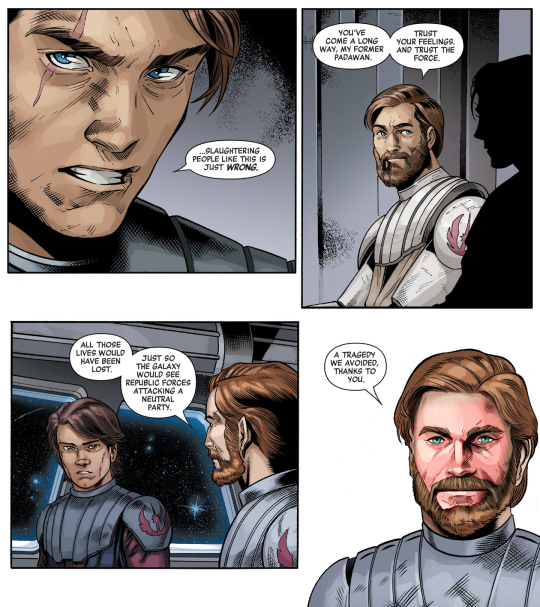

So eventually, Obi-Wan leaves for a mission which could turn out to be just a wild Bantha chase... he imparts one last lesson, says his goodbyes to Anakin...

... and comes back to this.

He is understandably devastated... and, of course, in true Jedi fashion, he blames himself:

But here’s the thing.
Forget that Obi-Wan is the ultimate selfless Jedi. Let’s put that aside.
Any parent would blame themselves for how their kid turned out. And sometimes? They’d be right to do so.
This isn’t one of those times.
Obi-Wan did his best; and Anakin’s choices - influenced though they may have been - were his own.
And that’s the new moral of Obi-Wan’s story, in the Prequels, according to Lucas.
“When you’re in this position as a mentor, whether you’re an actual father or not, this person is your charge, but you have no control over how they’re going to use that knowledge. [...] You hope they’ll turn out okay, you hope they do the right things, you hope you raised them right, and all that stuff. But there’s no guarantee or anything. You never know what’s going to happen. That’s the challenge.”
Obi-Wan will never stop thinking he shares some blame in his boy’s downfall. We see that he eventually is able to see things more objectively in From A Certain Point Of View, though, clearly, in Return of the Jedi part of him still feels he is somewhat at fault.
But we, the audience, know: he did his best.
And if his teachings hadn’t been regularly sabotaged by Palpatine for 13 years, if the Devil himself hadn’t manipulated Anakin and turned his own fears against him... Obi-Wan’s best would’ve been enough.
#obi-wan kenobi#george lucas#long post#meta#SW meta#Anakin Skywalker#obi-wan did not fail anakin#obi-wan#general kenobi#leave old ben-ben alone#character study#star wars#qui-gon jinn#bts tidbits
3K notes
·
View notes
Photo










See The Mandalorian's Greatest Guest Stars Come to Life in Star Wars' Next Art Book (gizmodo.com)
Artist: Brian Matyas / Christian Alzmann / Doug Chiang / Erik Tiemens / Ryan Church / Uwandi Trpcic / Shawna Trpcic
#the mandalorian#the mandolorian s2#star wars#action series#sci-fi series#fantasy series#concept art#character design#keyflame#artwork
93 notes
·
View notes
Photo

In 1997-99 I collected images relating to the upcoming film Star Wars: The Phantom Menace and put the best ones on a bulletin board in my room. This painting by concept artist Doug Chiang was one of the first pictures I pinned up. It had nothing to do with Star Wars, as it turned out. It was published in 2003 as an illustration for Orson Scott Card’s novella Robota.
21 notes
·
View notes
Note
UUHMMMMMM 25-32 for the dc asks!!!!!
25. Batgirl or oracle?
well in general for all of them i like cass most but if this q means for babs than oracle..... always.... no more babsgirl end it. like the ableism with the spine implant and now backbrace shit. the hideous purple pajama suit.
26. Whos your favorite batgirl?
wait above. cass but im due to reread her comics its been a decade
27. Batgirl and the birds of Prey or Redhood and the Outlaws?
sorry god. rhato man......... i could fix them i really believe it i have this whole au in my mind for why they would form that is nothing at all like the canon one. the problem is there are so many characters i love in a room i must make it work
28. Favorite comic run?
main dc comic itd have to be new gods/fourth world or orion solo........ but for any comics ENIGMA (1993)!!!!!! screams and cries and wails and pukes and scratches and bites and rips and tears and maims and sobs and
29. Favorite comic artist?
hmm i dont think i have a specific fave rn but i like riley rossmo, trung le nguyen, amy reeder, jack kirby, dale eaglesham, doug mahnke, liam sharp, cliff chiang, kelley jones, dan brereton, and WELL. maybe more idk
30. Favorite comic writer?
tbh i cant even............ i cant think of a writer whos things ive enjoyed without it being like BUT------!!!!!!!!!! most of them i would fist fight
31. Do you like the joker?
boiling him in oil (derogatory)
32. Who do you think is the most overused or overrated characters?
overused? batman and the 4 main batboys. sorry i know i was just talking about his transgender swag but he is like 99% of dc titles its so depressing. caus like none of them even really are that good even.
overrated? h4l. stan him if u will but "you shouldnt/cant dislike him because of stuff he did in old comics!11" is such a weird attitude im seeing a bunch lately.... caus tbh i think while arisia and p4rallax are the Big Events the underlying character aspects that led to those happening are still part of him. imo. i plan to write an essay on this one day bc i have like character analysis feelings on this on top of hater feelings
3 notes
·
View notes
Photo

This official "pitch" painting by Lucasfilm concept designer Brian Matyas helped seal the deal with Disney to green-light "The Mandalorian."
Earlier this month, the artist shared that Dave Filoni needed a "sketch of a small Yoda creature being presented to a group of Mandalorians."
Due to the quick turn-around, Brian used Daz 3D for composition and then his Hot Toys 1/4 scale Boba Fett as a base to paint on top. Doug Chiang was also involved early in the process.
251 notes
·
View notes